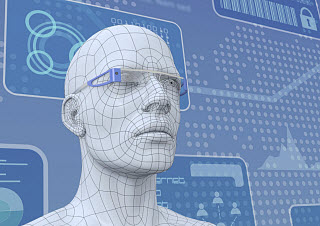The very first game for Google Glass from this mobile app development firm has been released.
Mind Pirate has just announced the launch of its Global Food Fight app, which is an augmented reality game that can run on Google Glass, smartphones, tablets, and smartwatches.
The game is a silly one that allows you to slingshot food at your friends, no matter where they may be on the globe.
This is among the first that are taking advantage of a new type of platform that has a range of different kinds of touch screens and sensors to provide a broad new augmented reality experience for players. The goal of Mind Pirate is to establish itself among the leaders in this new form of mobile gaming, even before this next generation of entertainment becomes mainstream.
This augmented reality is debuting simultaneously on Google Glass and iPhone.
That said, while it is getting its start on these two types of mobile devices, it will also launch on smartwatches and other forms of wearable technology. The Shawn Hardin, the chief exec at Mind Pirate, explained that Global Food Fight was constructed on Callisto, which is its own platform for wearables, making it a great deal simpler for them to be able to develop AR games.
The mobile app development firm explained that they are placing a considerable focus on the platform for wearable technology, including Google Glass. While they are not necessarily a mobile gaming company, Hardin stated that “we started with a game because, as a class of apps, it is one of the most popular you can make.” This recently released application, Global Food Fight, is being seen as a solid way to help to show off what their own platform is capable of accomplishing.
The augmented reality game app is free to play and is highly multiplayer, as well as using geolocation to add to the three dimensional action experience. It allows players to be able to look around within a 3D environment and locate various targets. These targets can be the player’s friends or enemies, or even politicians and celebrities from around the globe.
AR technology is transforming children’s books and video games at the same time.
With the start of the augmented reality games in traditional books trend by Sony, with its Wonderbook for PlayStation 3, both of those forms of entertainment have been redefined and many other products are now being released to enhance the reading experience – particularly for children.
Among the most widely publicized successes of AR books for kids was iDinosaur.
However, it was truly the Wonderbook that sent augmented reality books into the mainstream almost two years ago. The idea behind this technology is that a physical book contains a number of different components that are not detectable to the human eye. The only way to be able to access and view them is to use a smartphone or a tablet and the right apps to bring them to life.
For instance, a child’s book could be read on its own, or include augmented reality components to allow for interaction.
When children’s books such as iDinosaur are viewed through the assistance of mobile devices and AR apps, the illustrations can appear to spring to the page and move about. Tyrannosaurus Rexes have since been leaping out of the pages to show their stuff – though in a much smaller and much more digital form, of course.
In 2014, the trend has continued through the French Connection. They have now released the first volume of a children’s story series, Jack Hunter, which will introduce their own interactive AR elements. This book will work as a standalone novel that can be enjoyed by itself, or it can be viewed with the assistance of mobile devices that help the reader to unlock a broader range of different interactive elements.
These include augmented reality images as well as additional interactive stories and games. Though this may seem quite complex to parents, the latest generation of youngsters is proving to be increasingly comfortable with touchscreens, apps, and the overall concept of smart devices. As many households now contain at least one of these mobile gadgets, it can make AR technology based books quite a comfortable fit into the overall reading experience.


